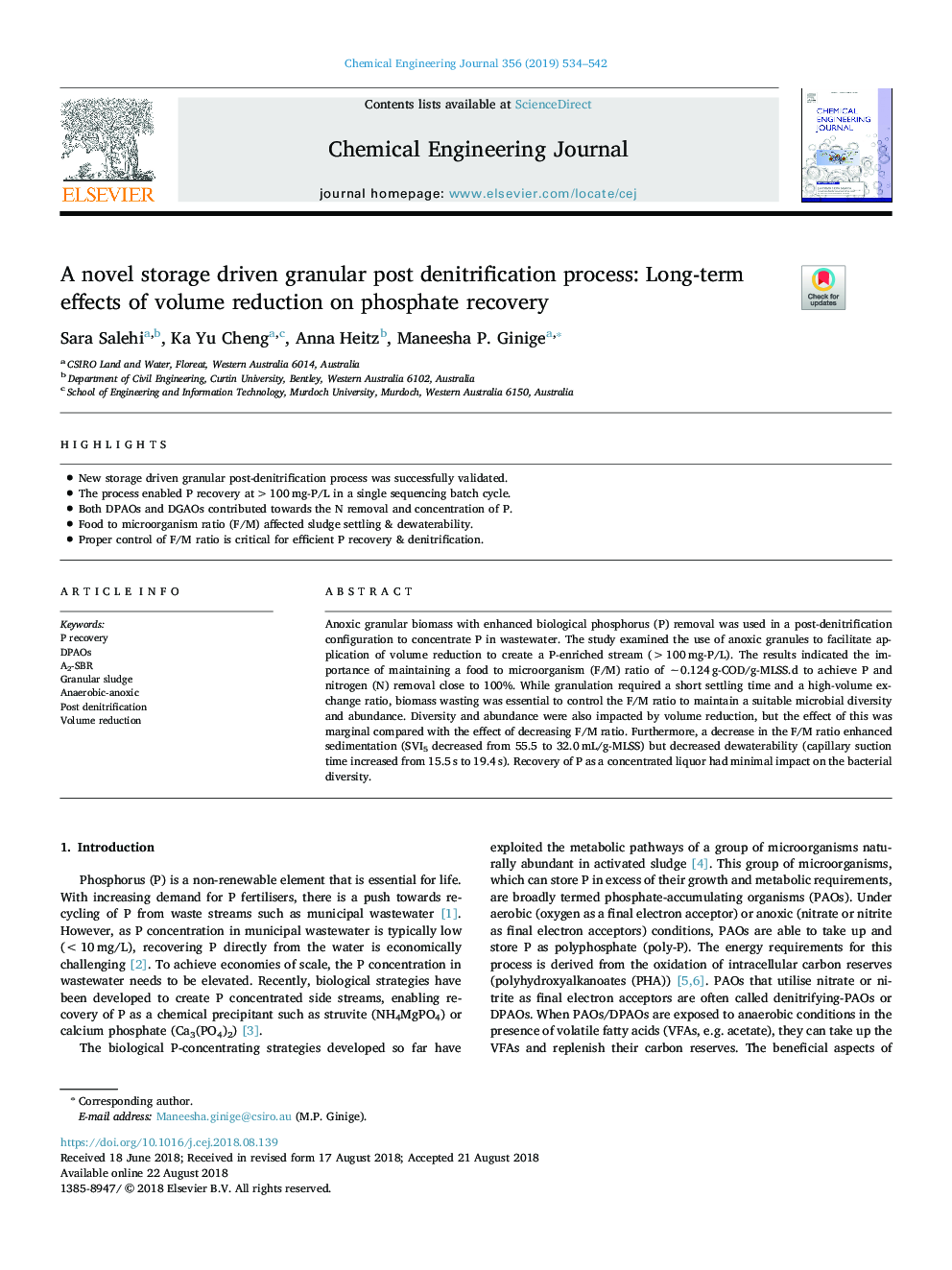| Article ID | Journal | Published Year | Pages | File Type |
|---|---|---|---|---|
| 10145213 | Chemical Engineering Journal | 2019 | 9 Pages |
Abstract
Anoxic granular biomass with enhanced biological phosphorus (P) removal was used in a post-denitrification configuration to concentrate P in wastewater. The study examined the use of anoxic granules to facilitate application of volume reduction to create a P-enriched stream (>100â¯mg-P/L). The results indicated the importance of maintaining a food to microorganism (F/M) ratio of â¼0.124â¯g-COD/g-MLSS.d to achieve P and nitrogen (N) removal close to 100%. While granulation required a short settling time and a high-volume exchange ratio, biomass wasting was essential to control the F/M ratio to maintain a suitable microbial diversity and abundance. Diversity and abundance were also impacted by volume reduction, but the effect of this was marginal compared with the effect of decreasing F/M ratio. Furthermore, a decrease in the F/M ratio enhanced sedimentation (SVI5 decreased from 55.5 to 32.0â¯mL/g-MLSS) but decreased dewaterability (capillary suction time increased from 15.5â¯s to 19.4â¯s). Recovery of P as a concentrated liquor had minimal impact on the bacterial diversity.
Related Topics
Physical Sciences and Engineering
Chemical Engineering
Chemical Engineering (General)
Authors
Sara Salehi, Ka Yu Cheng, Anna Heitz, Maneesha P. Ginige,
